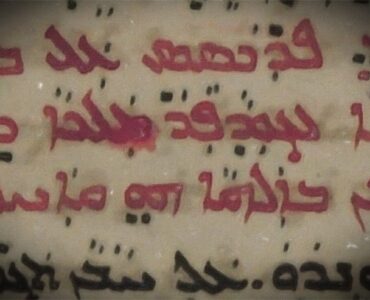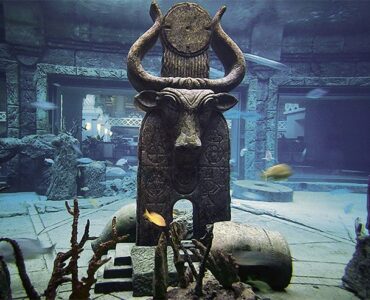Thomas Hämerken (1380-1471)
Born in Kempen, Germany (near Cologne) in 1380, Thomas Hämerken died near Zwolle in 1471. The name Thomas à Kempis, which was attributed to him, comes from the village where he was born (thus, Thomas of Kempen).
Thomas belonged to the school of mystics that extended along the banks of the Rhine, from Switzerland to the Netherlands, passing through Strasbourg and Cologne. He was a disciple of Gerard Groote and Florentius Radewijns, founders of the Brethren of the Common Life.
He became a skilled copyist, able to support himself. Later, he was admitted to the Augustinian monastery of Mount St. Agnes near Zwolle, where his brother John had preceded him and had been elevated to the rank of prior.
Thomas was ordained a priest in 1413 and was appointed subprior in 1429. His life is undoubtedly characterized by these words, written in the legend of an old painting believed to be his portrait: “In all things I sought peace and found it not, except in books and in retreat from the world.” On November 11, 1897, a monument was erected in his memory in St. Michael’s Church in Zwolle.
He is credited with one of the best-known books of Christian devotion, titled The Imitation of Christ. I say “titled” because originally, The Imitation was made up of autonomous booklets without a title. It was only later, after his death, that these booklets were organized into four parts and titled according to the opening lines:
Qui sequitur me non ambulat in tenebris dicit Dominus. Hæc sunt verba Christi, quibus admonemur quatenus vitam eius et mores imitemur, si volumus veraciter illuminari, et ab omni cæcitate cordis liberari.
He who follows me does not walk in darkness, says the Lord. These are the words of Christ, by which we are urged to imitate his life and conduct, if we truly wish to be enlightened and freed from all blindness of the heart.
I own a fairly rare copy of a literal translation done by Abbé Henri Brossard, which I would one day like to digitize and share here. To be continued, maybe.
So, who was this discreet monk whose personal writings are today the most printed after the Bible? Let us transcribe here an excerpt from a lecture by Master Samael Aun Weor.
The Mysterious Monk
Let us remember this phrase I wrote in one of my books in a former existence: “I am no better for being praised, nor worse for being insulted, for I am always what I am.”
Back then, I went by the name Thomas à Kempis, and I wrote The Imitation of Christ. I belonged to an esoteric society (I was a monk), and yet, in the monastery where I lived, this was unknown.
Usually, in the monasteries of the Middle Ages, great Initiates also lived—some were even very friendly. One need only remember the famous Rabelais, who wrote some very interesting and rather humorous works. Anyone who reads them “literally” might assume Rabelais was a clown. One can only laugh while reading Gargantua and Pantagruel, and any Gnostic, if they read these books, may see that they are humorous. However, when one learns to grasp their deeper meaning, one comes to realize that Rabelais was undoubtedly a great Initiate. He wrote in this style to try to escape the stake of the Inquisition, and by a miracle, he escaped—by a miracle. […]
In any case, many Initiates who devoted themselves to the Great Work worked intensely during the Middle Ages, and they even lived in the very monasteries of Roman Catholicism, blending in and becoming indistinguishable from the clergy. And, secretly, in silence, and at certain hours of the night, they held their esoteric meetings.
Samael Aun Weor
Here are a few rare photos taken from the book titled
« LE MANUSCRIT AUTOGRAPHE DE THOMAS A KEMPIS »
by L.M.J. DELAISSÉ – 1956.
The original manuscript, which is held at the Royal Library of Belgium, bears the code MS. 5855-61, or BRUXELLENSIS 5855-61.























